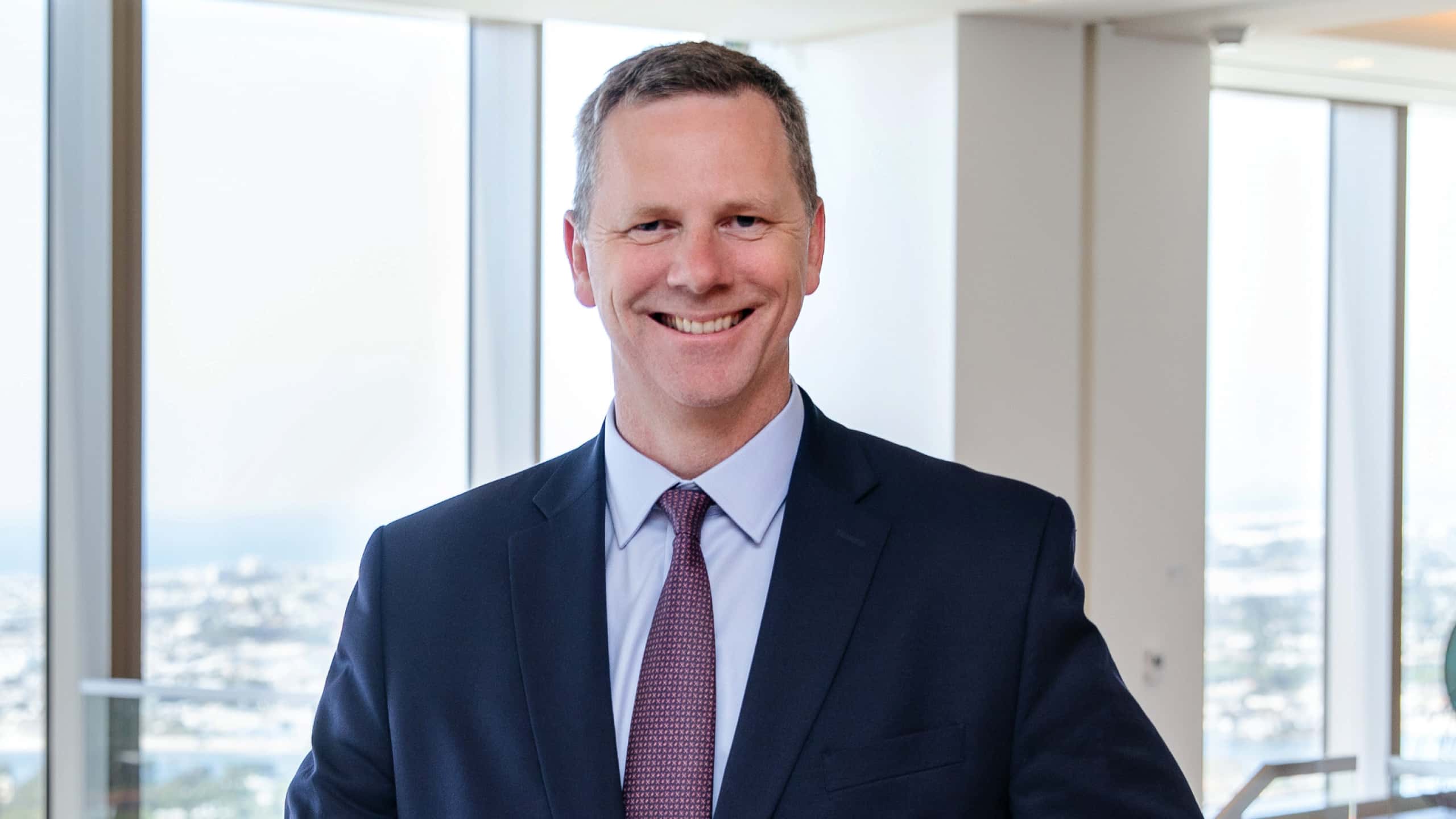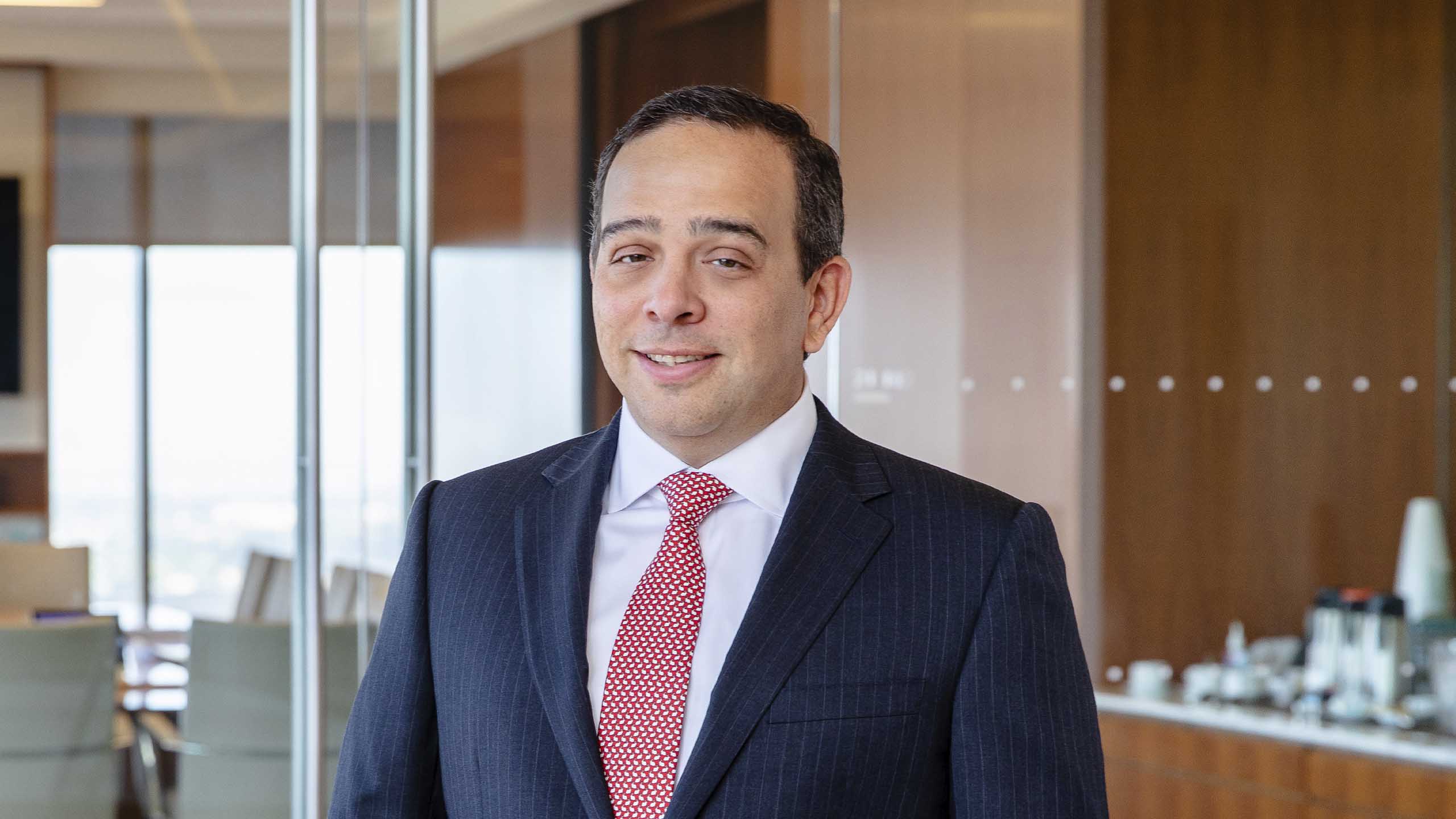



Summary
- Specialty finance emerged in earnest after the global financial crisis (GFC) as tighter bank regulation, stricter capital requirements, and changes to loan accounting led banks to curtail many types of specialty lending.
- Recent volatility in regional banks, increased regulation, and pressure on non-bank lending platforms are creating a large liquidity gap across specialty lending markets, providing potential opportunities for compelling risk-adjusted returns at a scale not seen since the GFC.
- This market opportunity coincides with a growing need among allocators to diversify their private credit exposure. Specialty finance assets often benefit from hard asset backing, diversified sources of potential return, and self-liquidating, structures that are designed to create high cash flow velocity.
Bank retrenchment and the emergence of private lending has been a dominant theme for much of the post-GFC environment. During this period, private credit markets have grown dramatically, providing the potential for attractive diversification, enhanced income, and reduced volatility.Footnote[i] A confluence of tightening lending conditions, ongoing regulatory and accounting changes, and an unwinding of bank balance sheets has created a unique entry point for specialty finance investors and catapulted this asset class into focus. We believe the private credit market is set for its next phase of growth with specialty finance, as investors need to diversify their private credit allocations beyond middle market direct lending. Here, we sit down with Harin de Silva and Kris Kraus, who co-lead PIMCO’s specialty finance, and Jason Steiner, who leads PIMCO’s residential mortgage credit team, to unpack what the broader credit tightening means for investors, and how it is creating potentially compelling investment opportunities across these markets.
Q: Specialty finance has grown rapidly since the global financial crisis and become a focused asset class, especially after the regional bank turmoil we saw earlier this year. What is specialty finance and how big is the market?
de Silva: PIMCO defines specialty finance, also known as asset-based finance, as lending that occurs outside traditional banking and commercial real estate channels that is secured by financial or hard assets. It provides critical funding across global economies, including consumer-related debt such as residential mortgages, credit cards, student, home improvement, and solar loans, to non-consumer assets, such as equipment-based lending and aircraft leasing. In addition, technology advancements have created niche specialty finance asset classes, including sectors linked to royalty streams on intellectual property.
In the U.S., we estimate the specialty finance market is approximately $20 trillion. For context, that’s more than four times the size of the U.S. and European leveraged finance and private corporate direct lending markets. While banks remain active players, there has steadily been a migration of financing activity into a newer ecosystem dominated by specialty finance lenders. We believe this is a persistent secular change that will fuel industry growth for decades to come. The specialty finance market is deepest in the U.S., but the asset class in the U.K. and Europe – where lending is more bank-dominated – has recently grown rapidly.
Q: There are several forces that have transformed capital markets since the GFC, one of which is the rise of private credit. Can you tell us how specialty finance emerged and how PIMCO approaches this market?
Steiner: Prior to the global financial crisis, banks controlled much of the origination and securitization of consumer and commercials assets. The crisis resulted in sweeping new bank regulations that imposed higher regulatory costs and prompted banks to prioritize some business lines and pull back from or exit others. Under Dodd-Frank, many large banks curtailed lending to consumers and small and midsize businesses to focus on higher-quality borrowers and larger, more standardized transactions. This reduced bank origination activity across asset types, but especially in residential mortgage markets, causing the securitization market to shrink dramatically. That led to opportunities for alternative credit investors, like PIMCO, to step in and provide liquidity. Since the GFC, the role of banks, which dominated capital markets, has changed tremendously and the composition of lenders is much more diverse. Investors often don’t appreciate the close degree of partnership that occurs across all these participants, including banks, insurance companies, and other non-bank lenders to provide credit to the economy.
With that said, there are periods in recent history when securitization markets can break down, and we saw that earlier this year on the back of a dramatic increase in interest rates. When stress and volatility creep into markets, this leads to credit contraction. Over the last several years, this dynamic directly contributed to the rise of non-bank or specialty finance lenders to fill the void, which evidences the close linkage between the ABS markets and the private specialty lending markets.
de Silva: Since the GFC, many specialty lenders, including non-bank mortgage originators, have faced challenges consistently finding alternative sources of capital to fund the assets they originate. Alternative credit lenders like PIMCO can play a unique role as a capital partner to many non-bank originators. We take a fundamental credit approach to investing — assessing the stability of the underlying asset values and cash flows. Often, the structure of our longer-dated funds allows us to focus on complex, misunderstood sectors. These areas of the market allow global allocators to target higher risk-adjusted returns than those typically available in the publicly traded debt and equity markets, with a much more muted volatility profile.
While private markets have been a stable source of capital for specialty lending markets, the asset class is still emerging as a dedicated private credit allocation for investors. We believe that it’s critical to have size and scale to understand how the different financing channels intersect across public and private markets and are ultimately valued.
Q: We saw volatility come back into the market in early 2023 which led to some notable regional bank failures. How has the banking sector turbulence in early 2023 affected specialty finance markets?
Kraus: This is an exceptionally interesting time to invest across these markets. You are witnessing paradigm shifts in how specialty finance risk is sourced and how it is financed. Global central banks have reminded investors – and many management teams – of the impact higher rates can have. We first saw the impact in non-bank lending businesses that relied on low-cost warehouses and functioning securitization markets. We witnessed public markets grind to a near halt in 4Q 2022 only to then see a strong risk-on appetite return in January of this year. But by the end of the quarter, we were seeing regional banks on the ropes. Volatility was back – finally.
Each crisis invites comparisons to the last: In the GFC, it was excessive use of leverage and high correlations, while more recently it was asset-liability mismatches in many core businesses for regional banks with no defenses against social media and the convenience now available to depositors through mobile banking.
It’s fair to say the federal government does not want to be in the business of backstopping banks beyond the protections provided by the FDIC. Regulators will almost certainly, in our view, require banks to hold additional liquidity and capital to enhance depositor protections and safeguard the financial system. Meanwhile, to attract deposits, banks will need to better compete against money market funds and other forms of short-term, higher-rate products in order to finance their balance sheets. All of this – from increased capital and liquidity requirements to higher deposit costs – impacts their business models. Executives will reassess the viability of long-term lending using daily deposits. And with higher funding and capital costs, they will likely review the profitability of their lending businesses to determine if they even make sense anymore. Banks we speak with are considering partnering with alternative forms of funding to de-risk while maintaining the customer relationships derived through their retail and small and midsize business lending.
Steiner: To add to that, the bank retrenchment has been in process. Despite a dire need for liquidity, banks didn’t widely sell their loans at deep discounts over fear that any hit to capital would lead to a crash in the equity markets. Instead, they began to curtail new lending and exit some origination business lines. Banks slashed lending to commercial real estate owners and developers, small businesses, investment funds, and consumers for residential mortgages and other needs. This has the potential to dramatically impact the supply of credit to smaller borrowers. They have also cut short-term financing to specialty finance lenders, which rely on low-cost lines of credit (known as warehouses) to make loans and on functioning securitization markets to sell them. That leaves a very large hole for alternative capital partners to fill.
Kraus: This has been an excellent example of PIMCO mobilizing its integrated platform and taking advantage of the market environment to further deepen our relationships with regional and community banks. Through potential partnerships, PIMCO can leverage the banks’ origination capabilities, while addressing non-bank lenders’ need for diversified sources of funding. Additionally, we are expanding our direct relationships with borrowers through our vast network of portfolio companies to lend in many areas affected by the bank pullback. Banks are increasingly pivoting to “forward flow” partnerships with alternative credit capital partners, under which they sell their interest in loan originations on an ongoing basis at a pace unseen previously. Banks were historically reluctant to engage in forward flow relationships, but their receptivity has shifted notably in the past several months following the regional banking crisis. The pace of these changes is only accelerating.
Q: What are your highest-conviction sectors and how do you source them?
de Silva: We see opportunities to partner with banks in many sectors, notably residential mortgage, solar and home improvement lending, and equipment finance. Pricing has become more attractive as available bank capital shrinks and demand for specialty lending rises – a trend that we expect will become a longer-term structural shift in pricing at higher unlevered yields for many of these sectors.
Residential mortgage credit. As large domestic mortgage loan originators sell assets to free up liquidity, we expect to participate in home lending and home equity loans, as well as other forms of residential mortgage credit. We source these assets both through large secondary asset sales from banks and by originating whole loans through forward flow arrangements with select mortgage originators and servicers.
Solar loans. In addition, we have been purchasing solar loans recently amid improved pricing. We like the asset class’ strong credit attributes, including the generally high credit quality of borrowers. We have selectively worked with some of the largest solar originators to source high quality assets based on key credit qualities such as credit score, income, bankruptcy/foreclosure history, and installer underwriting/oversight. We have also underwritten portfolios from banks and credit unions.
Equipment finance. In 2019, PIMCO acquired a controlling stake in a U.S. small ticket equipment finance vendor, to expand into the $1 trillion equipment finance market, which was previously dominated by regional banks. Generally, equipment leases have historically offered better potential downside mitigation than other loan types during recessionary periods.Footnote[ii]
Aircraft leasing. Mid-life and younger aircraft have attractive upside potential risk-adjusted returns as airlines look to increase fleet capacity and revenue generation amid air travel recovery. PIMCO is a majority owner in High Ridge Aviation, a premier aviation finance platform. We seek attractive opportunities to invest in new and mid-life commercial aircraft for higher-quality airlines as they look to de-lever from the COVID-19 pandemic and need competitive assets to meet financial targets.
Across these sectors, nonbank lenders are questioning their funding models amid ongoing market volatility. Capital is the lifeblood for specialty finance lenders, many of which relied on regional banks for funding. Other “originate to distribute” specialty lenders rely on active securitization markets. Muted activity in the securitization and traditional capital markets and the bank pullback underscores the importance of stable capital partners.
Q: Consumer spending makes up about 70%Footnote[iii] of the economy and we’re at a time when there’s a lot of chatter around the risk of a recession within the next year. What do you say to investors concerned about consumer-backed debt assets ahead of a potential economic downturn?
Steiner: There is a lot of chatter around the health of the U.S. consumer with high inflation and interest rates weighing on their willingness to spend. Yet, we see pockets of value in many consumer-related assets – including residential mortgages, home improvement, solar and student loans, as well as unsecured consumer loans and credit card receivables. The extensive data and analytics infrastructure embedded in PIMCO’s ecosystem helps give us an edge analyzing these markets.
PIMCO has acquired a database of consumer debt (auto loans, credit cards, mortgages, student loans, etc.) that represents roughly 10% of outstanding U.S. credit lines going back more than 20 years. That gives us approximately 200 million loan-level data points per month. For context, the New York Fed publishes a household debt survey using 5% of the U.S. consumer data in the credit bureau. With that data, we construct our own base case loss estimates to conduct through-the-cycle underwriting.
While the consumer has fared quite well, we remain selective with our originator counterparties, focusing on prime and near-prime consumer profiles to mitigate downside risk. We continue to believe that these investments have potentially attractive return profiles, despite a normalization in delinquency rates from an artificially low rate suppressed by pandemic-era stimulus.
Amid uncertainty about consumers’ staying power, originators are underwriting to the tightest levels we have seen in these markets, with approval rates 20%-40% lower across our originator partners. As purchasers of these loans, we are more than ever able to dictate terms. We believe the uncommitted nature of our partnerships is critical for us to be opportunistic – moving into and out of investments based on their relative value. Lastly, our underwriting assumptions are calibrated using the historical performance for every loan originated by our partners.
Q: We’ve heard quite a lot about the U.S. market and some of the higher conviction investment areas. What is the market opportunity in Europe?
Kraus: The European market appears attractive overall and we continue to balance our business across scalable markets and more targeted opportunities in smaller countries. Unlike in the U.S., European banks still dominate the financial system due to fewer alternatives to move money around. They manage their exposures by transferring credit risk off their balance sheets to free up capital in what is known as synthetic risk transfer (SRT). SRTs enable banks to enhance their capital position for lending purposes while maintaining borrower relationships – this could be across a portfolio of corporate loans, residential mortgage loans or LP commitments, for example. Pricing for investors in SRTs has become more attractive over the past several years.
Lurking in the background in this higher interest rate, lower-growth environment is new non-performing loan (NPL) formation as higher interest expense hits borrowers. Debt restructurings are rising and may portend more NPLs ahead. At the same time, populist policies in some countries may deter foreign investors from participating to the extent they did in the post-GFC cycle, creating a negative feedback loop into the banks.
Steiner: A dynamic we are following closely is the impact from mortgage refinancings at higher rates on overall disposable income levels and how households will prioritize payments (mortgage, cell phone, car, buy now, pay later loans, etc.). Related, we continue to lever open banking and our increasing abilities to data-mine consumer statistics to develop lending opportunities for segments of the population that previously didn’t consider or have access to installment loans.
I’d add within the consumer-related sectors, residential bridge lending in the U.K. presents compelling opportunities. The property market there has been underbuilt and needs upgrades. Those loans generally have low loan-to-values and high margin, so they often screen as compelling relative value within residential credit. Also, we like data infrastructure financing in Europe, where markets are fragmented with various jurisdictions governed by different data protection laws. Across both, there is an acute need for financing to construct these assets in markets that are severely undersupplied.
Q: Specialty finance is a critical funding source for consumers and non-consumers across a broad range of sectors and private capital has been essential over the past decade. Much of private credit has been focused on corporate direct lending from an allocation standpoint. Why should institutional investors consider an allocation to specialty finance today?
Steiner: The alternative credit market, particularly specialty lending, has grown dramatically since the GFC. We believe this is the right time for specialty finance to take center stage given the structural advantages and all-in risk-adjusted returns today. Yet the core private allocation for many investors remains solely corporate direct lending. Just as no prudent allocator would invest 100% of their public credit book in broadly syndicated loans, we believe that investors shouldn’t limit private credit allocations. By diversifying across an expanded private credit investment universe, investors can access a wider range of opportunities – including in specialty finance.
Our models indicate that private specialty investments can potentially provide higher returns than private corporate lending, with less volatility, and possibly higher risk-adjusted returns than other private asset classes and equities. In our view, specialty finance offers compelling attributes amid today’s uncertain inflation and interest rate trajectory. The assets’ principal pays down over time rather than in a bullet payment at maturity, de-risking the investment, shortening the duration, and allowing for efficient redeployment of capital based on opportunities. And its diversifying risk profile – with low investment return correlations to markets, the economy, and one another – may potentially bolster specialty finance investments when the markets and economy slow.
Q: As you think about the future evolution of the banking model, what are some of the key takeaways for investors to know about capitalizing on opportunities in specialty finance?
de Silva: As we look at the current era of specialty finance, it operates across banks, non-bank lenders, and alternative credit players. The asset class evolved from a purely “originate to hold” (i.e., bank-driven model) to an “originate to distribute” model. Meanwhile, the securitization markets grew and non-bank originators filled the void left as commercial finance companies disappeared after 2008. As we discussed, capital is the lifeblood for non-bank originators to keep originating product. The regional bank crisis in early 2023 evidenced why multiple legs in the funding stool are needed. Originators increasingly value the stability of capital, even at the cost of more expensive capital.
Kraus: Allocators who develop exposure in this asset class cannot be tourists across sub-sectors. We have methodically developed origination partnerships and asset management capabilities to build deep loan-level analysis of the complex assets and structures underlying sub-sectors such as aviation, consumer lending, equipment finance, and NPLs. After more than 12 years of investing in these private markets, and decades more in the ABS and RMBS markets, PIMCO is uniquely positioned with extensive origination channels spanning more than 25 collateral types, plus deep data infrastructure and analytics to support underwriting. The PIMCO platform has the size, scale, and financing to access high-barrier-to-entry investment opportunities.

